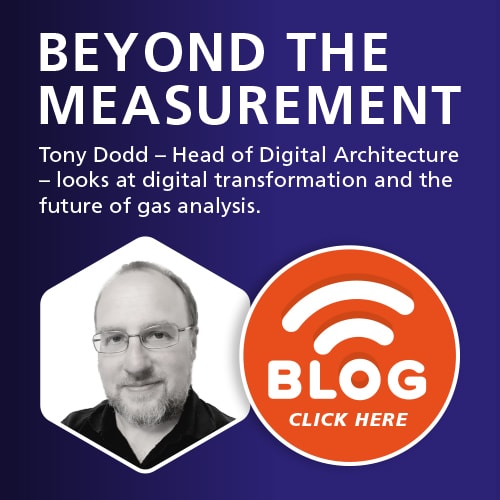Key process points for gas analysis
VCM is created from the reaction of hydrogen and chlorine (Cl₂) to form hydrogen chloride (HCl), which in turn is combined with acetylene to produce VCM. Gas analysis measurements are required across the process, including monitoring moisture in the Cl₂ stream to avoid compressor corrosion, safety measurements for both HCl and Cl₂, and oxygen measurements in the acetylene stream.
Accurate measurements in difficult process conditions
Challenging process conditions, such as condensation and corrosion, can affect the gas analysis equipment used in this process. Analytical systems must not only deliver reliable measurements for process control and safety, but have to be able to do so without being impaired by the conditions themselves.
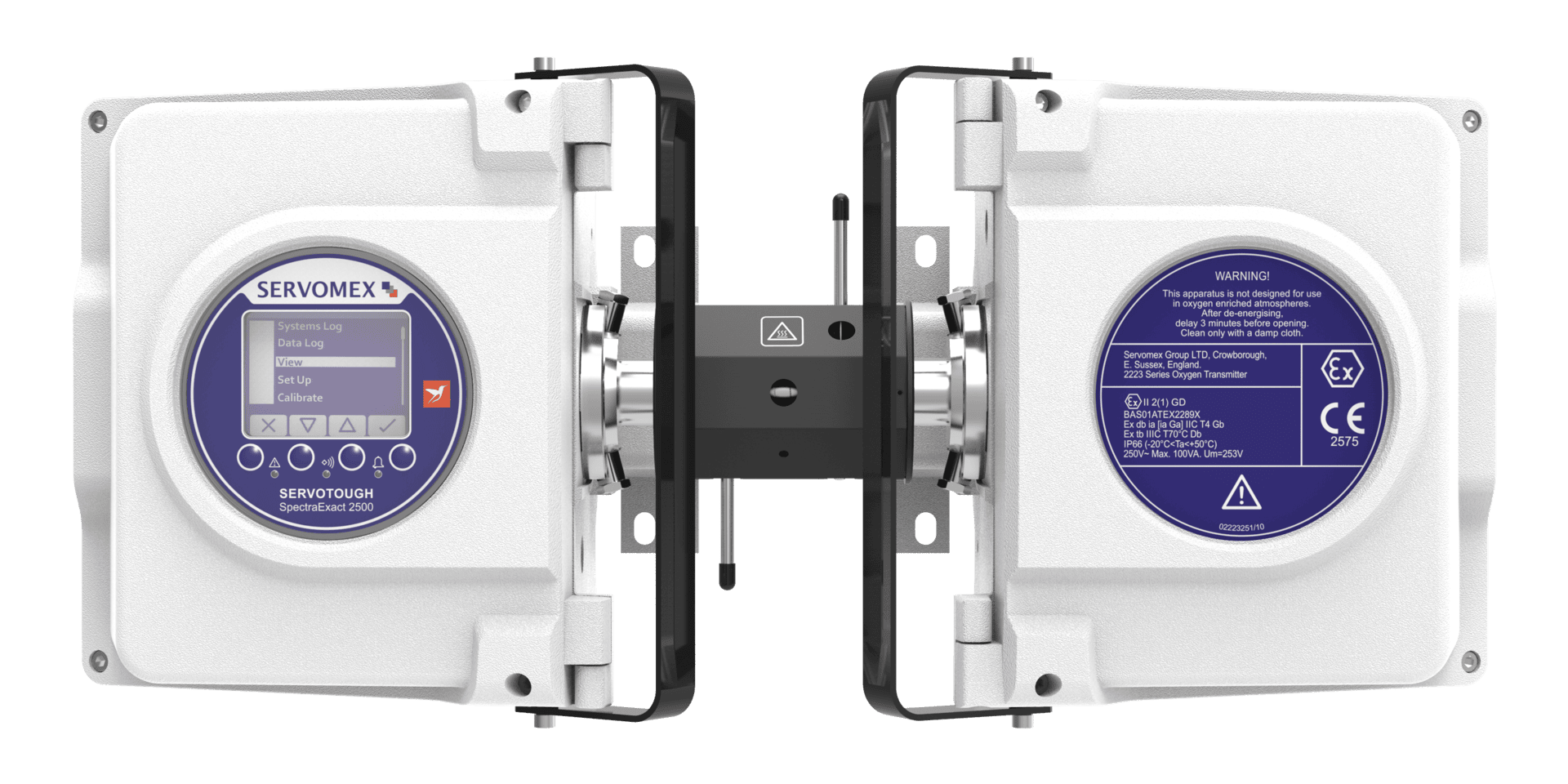
A solution for safety and protection against corrosion
The rugged SERVOTOUGH SpectraExact 2500 is able to accurately provide single and multi-component analysis at key process points, including measurements for moisture in Cl₂ to protect the compressor from corrosion damage. It can also make the required measurements for HCl and Cl₂ concentrations between the HCl reactor and preheater stages of the process.
We’re trusted experts for VCM production
With extensive experience in supplying analytical systems for the VCM production process, we provide solutions that are proven to deliver the results you need.
Expert team
Our experts have deep applications knowledge and can advise on the optimum solution for your plant conditions, supplying gas analysis that exactly matches your requirements.
Quality products
With a wide range of accurate and reliable gas technologies available, we can deliver the best measurements at every point of the VCM production process.
Global support
Our high-performance analyzers are supported by a worldwide network of service staff, ensuring reliable peak performance from day one.
Meet the experts

Karen leads the Industrial Process and Emissions Business Unit in providing solutions which support our customers as they overcome the challenges of making their processes safer, cleaner, and more efficient.
Karen Gargallo, Business Unit Manager, IP&E
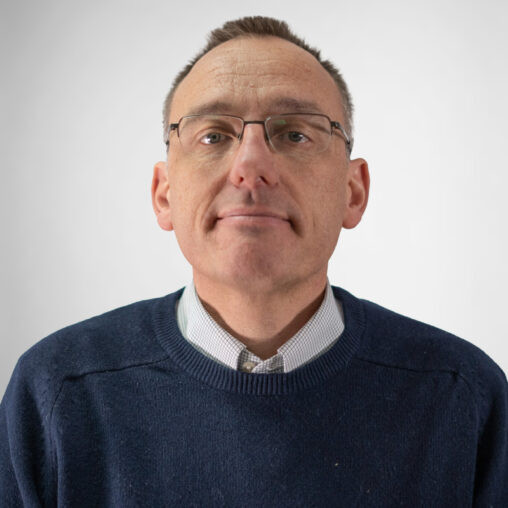
Responsible for managing our oxygen analyzers in the Industrial Process & Emissions sector, Keith has been working with gas analysis solutions for more than 20 years, 12 of them at Servomex.
Keith Warren, Product Manager

Leading the life-cycle management of our Spectroscopic analyzer range, Rhys is responsible for the development of the markets they serve, and the strategic growth of those technologies.
Rhys Jenkins, IP&E Product Manager, Spectroscopic Analyzers
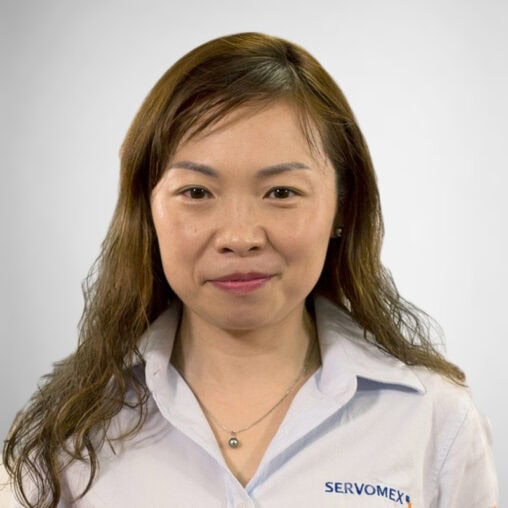
Overseeing the business development operations of our Industrial Process & Emissions team in China, Huiyu leads our pursuit of large international projects.
Huiyu Guan, Business Development Manager, IP&E, China
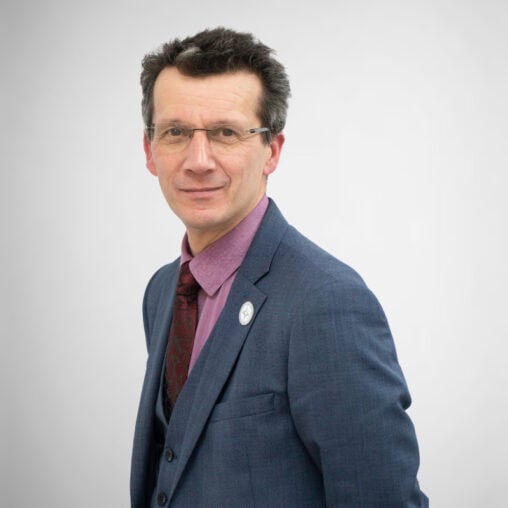
Stephen is responsible for managing the lifecycle of new Servomex Products, specifically, the introduction of new technologies into Servomex Analyzers. As STEM Team Leader he also coordinates the internal and external STEM program.
Stephen Firth, Product Manager- Strategic Projects
Servomex analyzer finder
Refine by search term
Clear filtersRefine selection by:
Showing 31 of 31 products
4900 Multigas
SERVOPRO Safe Area
The 4900 Multigas is a high-performance CEMS analyzer designed for a wide range of multi-gas measurements.
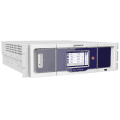
Chroma
SERVOPRO Safe Area
The Chroma is optimized to specific background gases to ensure optimum performance for your application.
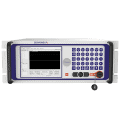
DF-745
SERVOPRO Safe Area
The DF-745 delivers trace and ultra-trace measurements of moisture for ultra-high-purity (UHP) electronic gas checks in LED/LCD manufacturing processes.
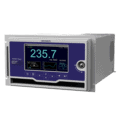
DF-745 SGMax
SERVOPRO Safe Area
The DF-745 SGMax is designed for the measurement of diverse gas mixtures in specialty gas blending applications.
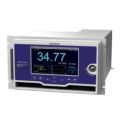
DF-749
SERVOPRO Safe Area
Providing trace and ultra-trace moisture contaminant measurements in a variety of background gases, the DF-749 is ideal for quality checking of UHP gases used in LCD and LED manufacture.
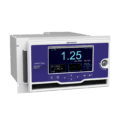
DF-750
SERVOPRO Safe Area
The DF-750 is a trace/ultra-trace moisture analyzer optimized for measurements in the ultra-high-purity (UHP) gases used in 300mm semiconductor fabs.
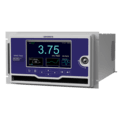
DF-750 ULTRA
SERVOPRO Safe Area
Delivering industry-leading trace/ultra-trace moisture measurements, the DF-750 ULTRA is optimized for quality monitoring in the ultra-high-purity (UHP) gases used in 300mm semiconductor fabs.
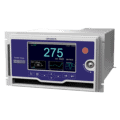
DF-760E
SERVOPRO Safe Area
Designed for quality control applications in UHP bulk gases, the compact DF-760E analyzer is a unique solution for the dual measurement of trace and ultra-trace moisture
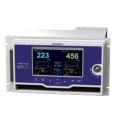
DF-760E ULTRA
SERVOPRO Safe Area
Designed for industry-leading quality control measurements in UHP bulk gases, the compact DF-760E ULTRA is a unique dual-analysis solution for trace and ultra-trace moisture and oxygen.
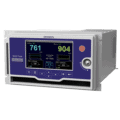
FID
SERVOPRO Safe Area
With trace analysis capability, the FID is ideal for ASU safety and quality control applications.
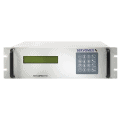
FluegasExact 2700
SERVOTOUGH Hazardous Area
Designed to measure O2 and COe in flue gases for improved combustion efficiency and reduced emissions.
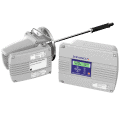
Laser 3 Plus Combustion
SERVOTOUGH Hazardous Area
Unmatched installation flexibility plus cost and performance benefits, ready for fast, accurate and responsive measurements in combustion and process control.
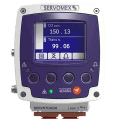
Laser 3 Plus Environmental
SERVOTOUGH Hazardous Area
Compact, high-performance Tunable Diode Laser (TDL) analyzer, specifically optimized for ammonia slip measurement
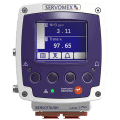
Laser 3 Plus Process
SERVOTOUGH Hazardous Area
Optimized for the fast, accurate and responsive measurement of process oxygen (O2) in hot or hazardous conditions.
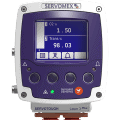
Micro i.s. 5100
SERVOFLEX Portables
Designed for the measurement of oxygen (O2) in potentially flammable gas samples. Certified to Zone 0 and Zone 1 and suitable for measuring percent levels of O2.
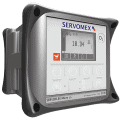
MiniHD 5200
SERVOFLEX Portables
The MiniHD 5200 portable gas analyzer is a rugged, heavy duty analyzer designed to accurately measure the levels of O2, CO and CO2 within common gas mixtures.
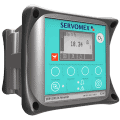
MiniMP 5200
SERVOFLEX Portables
A portable, safe area, mains or battery-powered gas analyzer offering accurate single or dual % level measurements of oxygen (O2) and carbon dioxide (CO2).
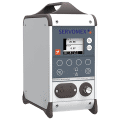
MonoExact DF150E
SERVOPRO Safe Area
The MonoExact DF150E combines the reliability of Servomex’s tried and tested Coulometric oxygen sensor with a more user-friendly package.
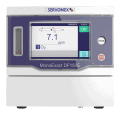
MonoExact DF310E
SERVOPRO Safe Area
Designed specifically for accurate measurements of oxygen in industrial gas (IG) applications.
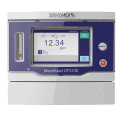
MultiExact 4100
SERVOPRO Safe Area
A high-performance multi-gas analyzer designed to provide up to four simultaneous gas stream measurements.
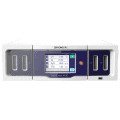
MultiExact 4200
SERVOPRO Safe Area
The MultiExact 4200 analyzes up to four gases simultaneously for Syngas and HyCO
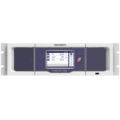
NanoChrome
SERVOPRO Safe Area
Incorporating the latest advances in gas sensing and signal processing methodology, the NanoChrome revolutionizes ultra-trace purity measurements.
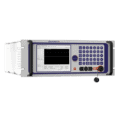
NanoChrome ULTRA
SERVOPRO Safe Area
Using proven ultra-trace sensing, the NanoChrome ULTRA conquers the most stringent demands of the semiconductor industry, delivering a cost-effective solution compared to competing technologies.
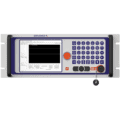
NanoTrace DF-500 series
SERVOPRO Safe Area
Empower your ultra-high-purity (UHP) gas with Gen-7 of our SERVOPRO DF-500 series of Coulometric analyzers for ultra-trace oxygen measurements.

NanoTrace DF-550E
SERVOPRO Safe Area
An ultra-trace Coulometric oxygen analyzer, the DF-550E is optimized for quality measurements in ultra-high-purity electronic gases.

NanoTrace DF-560E ULTRA
SERVOPRO Safe Area
A superior quality control solution for ultra-high-purity (UHP) electronic grade gases, the DF-560E Ultra delivers an industry-best detection of 45 parts per trillion for oxygen (O2).

Oxy 1900
SERVOTOUGH Hazardous Area
The Oxy 1900 oxygen (O2) gas analyzer sets new standards of flexibility, stability and reliability from a single, cost-effective unit.
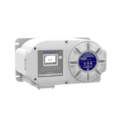
OxyExact 2200
SERVOTOUGH Hazardous Area
The high-specification OxyExact 2200 O2 analyzer offers an unrivaled combination of precision, flexibility and performance for optimum process and safety control.
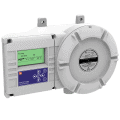
Plasma
SERVOPRO Safe Area
The Plasma delivers an accurate, highly stable and reliable measurement, with high sensitivity in the 0-1ppm range.
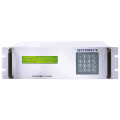
PureGas
SERVOPRO Safe Area
A getter-based purification unit designed for the purification of carrier gases used in Gas Chromatography (GC) and other analytical applications
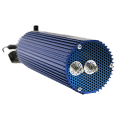
SpectraExact 2500F
SERVOTOUGH Hazardous Area
Flexible single and multicomponent gas analysis capability for corrosive, toxic and flammable sample streams.

An ethical approach to business
Servomex’s values underpin everything we are and everything we do: they guide how we work, inform our decision making and shape our culture.
Find out more with our range of VCM resources
If you want to learn more about our products and solutions for VCM production and related processes, this selection of downloadable resources has further information.
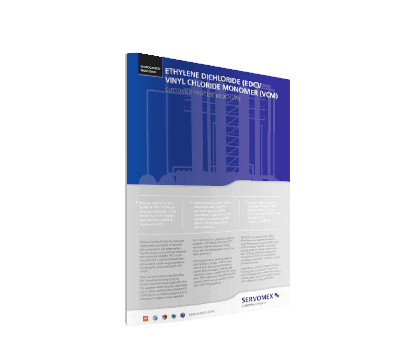
Ethylene Dichloride/Vinyl Chloride Monomer
Reliable gas analysis solutions for complex process measurements in production of these PVC intermediates

Ethylene Dichloride/Vinyl Chloride Monomer
Reliable gas analysis solutions for complex process measurements in production of these PVC intermediates
Remove from basket
Application Note Ethylene Dichloride (EDC) – Vinyl Chloride Monomer (VCM)
» Read more about: Application Note Ethylene Dichloride (EDC) – Vinyl Chloride Monomer (VCM) »

Application Note Ethylene Dichloride (EDC) – Vinyl Chloride Monomer (VCM)
» Read more about: Application Note Ethylene Dichloride (EDC) – Vinyl Chloride Monomer (VCM) »
Remove from basketGet the latest news, sign up to emails
You've been added to our newsletter
You've been added to our newsletter
Application Development Manager Matt Halsey is joined by Application Development Engineer Maria-Katharina Mokosch to discuss how gas analysis helps overcome challenges in the production of vinyl chloride monomer (VCM).
Transcript
MH: Welcome everybody once again to another Servomex podcast. Today we’re going to be talking about vinyl chloride monomer or VCM. And today I’m joined by one of our experts, Maria. Good morning, Maria.
MKM: Good morning, Matt.
MH: Maria is our application development engineer covering the EMEAI region – so that’s Europe, the Middle East, Africa, and India – and she is based in the Netherlands.
So, vinyl chloride monomer: let’s talk a little bit about that. This was a chemical that was first produced back in the 1830s, and the term monomer that appears in the name, the definition of a monomer, is a molecule that can react with larger molecules to form a longer polymer chain. And this is the process called polymerization.
VCM itself is a chlorinated hydrocarbon, it’s organic. And basically, what this, means is a chlorinated hydrocarbon, something that contains at least one covalently bonded chlorine atom, is a very, very versatile chemical – it’s a building block. So, it’s not much use in its own right, but it goes off to make other things and, predominantly, it goes off to make PVC, which I’m sure everybody listening has heard of, it’s used all over the place.
PVC is polyvinyl chloride. This is the third most widely produced polymer in the world of polyethylene and polypropylene. And you’ll hear future podcasts around these chemicals, I’m sure, especially polypropylene. PVC is around 40 to 50 million tons every year. So very, very large quantities. And PVC will go on to produce some everyday items that we’ve all come across. So, window frames – you hear of UPVC window frames in more modern houses – bottles, packaging, cable insulation on electrical cables, inflatables – so things like paddling pools that we all have out in the summer – plastic piping for plumbing… So it’s very, very versatile, as I mentioned earlier.
Now going back to VCM, which is one of the components of PVC, there’s around 50 million metric tons of this stuff produced every year. To put that into some kind of equivalency, my random fact of the day is that’s 167,000 Boeing 777 planes, fully loaded. Should put it into perspective for you. And most of the VCM produced annually is actually produced in America. They’re the biggest manufacturer, the United States, followed by China, who are also the largest consumer of VCM, globally. Maria, could you tell us a little bit about the VCM process?
MKM: So, the production for VCM commercially started about the beginning of the last century, so about the 1920s. And at first it was mainly the hydrochlorination based on acetylene. This route is known for high energy costs and is basically obsolete in every part of the world except for China, mainly because they want to keep a certain amount of autarky – they don’t want to be reliant on other energy sources. So what they’re doing is, basically, they make coke from coal and calcium oxide from limestone, and then they heat it up to make calcium carbide and CO. Then they put water inside to intermix and make acetylene which then reacts with hydrogen chloride to form VCM. And yeah, that’s basically it in a nutshell. Eventually, because the catalyst is based on mercury, the rest of the world started to go more… and also the other reason was ethylene became more widely available… so the rest of the world went more towards creating VCM based on ethylene.
MH: So my understanding, one of the differences as you’ve already mentioned, between these two processes, the US being the largest manufacturer of VCM, of course, are sitting on a lot of ethylene capacity, a lot of ethylene production, so it makes more sense for them to use ethylene in their process to produce VCM. Whereas, as you say, China using the acetylene route, of course is more readily available to them without relying on other sources of ethylene, which means they can be a lot more independent with their VCM production.
MKM: That’s right. So basically, what they’re doing is they’re creating EDC or crude EDC based on chlorine and ethylene and a chlorination reactor and this crude EDC is then cleaned up and put through pyrolysis, and is then basically split into VCM again and HCl. The transformation is about 50ish percent, so you have quite a lot of EDC left and also HCl, which then is rerouted into the second part, which is the oxychlorination, redone into the EDC and goes back into the process in order to create VCM again, so, it’s kind of a no-waste process, if you so want.
MH: Yes, like recycled through, and it’s a good time just to interject as well and point out that EDC, so, ethylene dichloride, is another very important process for Servomex. And it will be another podcast that we do in the future and we’re perhaps a little bit out of order. Ideally we would have we would have perhaps done EDC first but, you know, the joys of trying to organize podcasts with the right people. So, EDC will be something that, listeners, you will hear from us in the future, which will help make this total manufacture of PVC make a little more sense.
MKM: Let’s go back to the pyrolysis. After the pure EDC is split into VCM and HCl, it basically goes through recycling mode. So the VCM is split and put into the into a clean-up fractionator, basically, where it is then packaged and eventually sent either to storage or to a polymerization stage.
If the PVC manufacturer is right next door, if you so want, and the rest of the stream, the rest of the EDC is put back into a recycling stream and put back into the process. And the HCl also after the HCl splitter is going back into the second round of creating EDC, through oxychlorination. So you’re adding again, in ethylene, you’re also adding oxygen. There are two ways. One is you’re using oxygen directly, which then decreases the reactor off-gas or the vent gas, because you’re simply adding less impurities, and thus reducing the treatment costs for the vent gas eventually for your plant, or you’re using air, which is low-cost and more easily available. But obviously you’re creating NOx and other by-products. So that is the next round.
So then you’re again, producing in this oxy combination reactor, EDC. And you’re going back into the pyrolysis and creating VCM again. That’s obviously before you’re purifying EDC, before you’re going back into cracking. Essentially, it is a cycle reaction, so you’re having an almost endless cycle of creating EDC, breaking it down into VCM, HCl and EDC and then you’re recycling EDC and HCl again in order to create, again, the same cycle.
MH: Okay, so some of the analysis requirements of course – that’s really why we’re here today. Going back to the start of the process, one of the first measurements we see is the ethylene purity. For this where we’re looking to use a SpectraExact 2500, looking at pure ethylene, effectively. So why, Maria, do we use the 2500? What are the benefits of using this infrared analyzer?
MKM: The 2500 is quite reliable, very robust. It is essentially unbreakable. We know in the field, a couple of our SpectraExacts are older than 30 years, so it is definitely very reliable and very cost-benefit-wise for the customer, quite beneficial.
MH: And of course, another one of our non-contact measurements. So, it consists of a gas cell, it’s sealed, so none of the process gases can actually reach the source or detector.
MKM: That’s correct. It is essentially making sure that your ethylene stream is as pure as possible.
MH: Presumably the quality of the ethylene feed is very important because we’re mixing this with chlorine in the reactor; we don’t want any impurities in there which are going to affect the throughput from the reactor.
MKM: That’s right. Yes.
MH: So on the reactor itself, we have another one of Servomex’s very specialist measurements, which is both a quality but also, more importantly probably, a safety measurement of oxygen.
MKM: Yes, you’re speaking of the oxygen measurement with the 2200. It is indeed critical. Basically what we’re doing is we’re measuring that oxygen is below the limiting oxygen concentration. So actually, it’s a measurement which is twofold. One is obviously for safety, so you’re making sure that there’s not too much oxygen inside, so as to not create an explosive mix in the reactor. And also, the second part is, if you’re putting too little oxygen inside, the efficiency drops, so you’re trying to make sure that your reactor is working at the optimum level.
In order to create maximum process safety, what you can do, is you’re using a voting system, for which the 2200 is ideal, because you can have several transmitter units with one controller. So you’re essentially comparing the results of several analyzer transmitter units, and make sure that they’re all giving you the same information.
MH: Yeah, exactly. And listeners of our previous podcasts would have heard us talk about very similar systems in use on the ethylene oxide process on the reactors, the PTA process on the reactors, where it’s very common to use a 2200 in a voting system configuration. You would typically have, say, three transmitters, although you can have up to six, but usually three per reactor outlet, which look at, basically, two of the three agreeing with each other on a reading.
If that’s not the case, normally, the process would shut down, which would allow the operator to investigate why the measurements weren’t the same, if there’s actually a problem in the reactor, because obviously, safety is of paramount importance on these plants to keep both the plant intact and of course, keep the personnel safe.
MKM: That’s right, yeah. After the chlorination, the direct chlorination reactor, basically you’re measuring the crude EDC stream, and what you’re doing is you’re measuring the rest of ethylene which is in there, so it should be typically within the range of zero to 40% maximum. This is an order to control the process and make sure you have sufficient EDC. This is before the EDC cleanup. After the cleanup, what you’re doing is after the fractionator, you have essentially three streams. One is the light ends with the rest of the caustic scrubber because the fractionator works, basically, washing with a caustic scrubber and separating ECD and traces of HCl, chlorine.
So the light ends, basically, are measuring the sodium hydroxide, which is the caustic scrubber in the range of zero to 10%. And then the heavy ends are going to be separated. We don’t have a measurement for that at the moment, and the pure EDC is sent further into pyrolysis. The pure EDC is then monitored for moisture, for water and EDC. One of our very common measurements with 2500, the reason is that with a high concentration of HCl, EDC, and some residual water, you have the risk of corrosion damage. So it’s very critical in order to prevent any damage to your plant, essentially.
Then at pyrolysis, you have another one of our very common measurements, which is combustion control, either using our trustworthy FluegasExact 2700 with oxygen measurement and combustible measurement, or you’re using two Laser 3 Pluses – one for oxygen, and one for CO.
Obviously, both of them are in situ, the Laser 3 Plus has the advantage of being able to give you an averaging measurement, meaning that if you have a bigger furnace, you’re basically measuring over the whole length of the furnace, whereas the FluegasExact gives you a spot measurement, which is sufficient on smaller furnaces, but can create a dangerous situation on a bigger furnace if you don’t use several of the 2700s. So you essentially require several spot measurements whereas the Laser 3 Plus would only require two lasers over the whole length. So that’s essentially the trade-off.
MH: So, as Maria has said, you know, it’s very common to require multiple 2700s in combustion control applications over larger furnaces, and you’d normally expect to see, perhaps, a unit every four or five meters in that application in order to get a good average across the duct or the process.
One important thing to mention as well is, we talk about combustion control, which is a very common application for Servomex and we’ve got the products and the expertise, we’ve had that for many years in combustion processes. Actually, the main difference here is between a more traditional combustion process and pyrolysis, which are slightly different. So whereas traditional combustion and previous podcasts have addressed thermal power generation, burning coal and natural gas, we’ve looked at process heaters, which burn a variety of fuels.
Typical combustion of course, oxidizes fuel, or combustor fuel in the presence of oxygen, whereas pyrolysis is actually the opposite of that. Pyrolysis is a decomposition reaction to break down organic materials in the absence of oxygen. So, that’s why this measurement is very important. We’re not necessarily looking at excess oxygen post-combustion with the 2700 or the Laser. We’re actually looking at monitoring for the lack of oxygen in the process, because you don’t want to oxidize your products, you just want to decompose it. I think that’s quite an important distinction here, between traditional combustion and pyrolysis.
MKM: Right. After pyrolysis, the next important measurement which we are having is, because the stream contains VCM and HCl, and the rest of the EDC which has not been converted into VCM, which should be about… well, according to literature, the conversion rate is about 50 to 55%. So, depending how well you run your pyrolysis process, you have a little bit more or a little bit less conversion. But the important notion is you still have a lot of EDC and HCl left over. And any water which is contained in there will increase the risk of corrosion. So that’s why it’s important again, to measure water in EDC at this stage.
After creating the VCM, the stream essentially contains HCl and EDC, as already mentioned, which then has to be removed again. This happens in the quencher, where the rest of the EDC is removed and sent back into the recycling stream and back up towards the crude EDC stream in order to be cleaned up again and reused.
You’re then also splitting HCl from the VCM stream, which happens in the HCl splitter. Recycled HCl needs to be of high purity in order to be able to then be used in the oxy chlorination reactor to create EDC again. So, what happens there is, we’re measuring, essentially, the purity of the HCl. And ideally we should also measure the trace HCl in order to create optimum reactor control.
Then we’re going further with the pure HCl stream, which is then fed into the oxy chlorination reactor, and together with oxygen and ethylene created into, again, crude EDC. The feed streams here, essentially, are ethylene and oxygen. Again, it’s important to measure oxygen here, the purity of oxygen 90 to 100%. And ethylene, also the purity, in order to create the best possible outcome without by-products, for optimum process control.
MH: So here, again, we’re seeing a very similar type of application that we see in our other chemical-type processes where we have a reactor with basically two feeds – in this case ethylene and oxygen, which is the same as we’d see in the ethylene oxide process – where we’re looking at the purity coming in, which of course is very important to maximize throughput. And then what’s very important, again is the outlet of the reactor, monitoring the oxygen levels using Paramagnetic technology for throughput and for safety, because ethylene in oxygen, as we know, and as listeners of our ethylene oxide podcast will know, mixing these two things together can form a very dangerous explosive mixture. So, the levels of oxygen have to be tightly controlled.
The reason we’re using Paramagnetic here again is the 2200’s ability to be used as a voting system, which is a benefit in itself. But in terms of the actual technology, a much more reliable technology than, say, electrochemical, which it is often compared to, which is a cell that will deplete over time. Paramagnetic is completely non-depleting, it requires no reference gas, it runs completely independently… And although a contact sample – so what I mean by that is that the process sample actually has to flow through the Paramagnetic cell – and it relies on the interaction of oxygen and the magnetic field, hence the name Paramagnetic, it’s a very rugged sensor.
We are very careful with material selection to make sure that none of the seals or metallic elements will react with the gases in the in the sample stream. It’s become a very industry-recognized technology, in many applications, it’s preferred if not specified, especially in other processes, because it’s seen as such a reliable and trustworthy technology and it’s been in use for many, many years.
MKM: One of the benefits of the OxyExact obviously is also that you can return the sample to process, whereas with most electrochemical cells, you cannot.
MH: Yeah, it’s a very good point. So, Maria, the challenges of course of these water and EDC applications with the 2500 and any sample with HCl is the acid properties of these gases. So how do we ensure that our analysis equipment remains reliable when it’s been subjected to such components?
MKM: Well, the SpectraExact especially has several options for material choices with the sealed cells. What we do offer typically is Hastelloy or Monel, for very corrosive components: so essentially for HCl, but also for EDC streams, we would use Hastelloy or in some cases Monel instead of the standard stainless-steel cell.
And the second part is obviously the sealing itself. So, we would use PTFE O-rings in order to prevent any leakage due to some damage, or some corrosion, or degradation of the seals itself. And another part which is sometimes not mentioned is that what you can also do, in order to prevent any damage in case of leakages towards the analyzer, is that you can purge of the analyzer. So, you don’t run the risk that, in case of breakages, there will be anything leaking outside or towards the electronics of the analyzer itself.
MH: The primary protection for a Paramagnetic analyzer from such gases of course, is the sample system. The sample system is in place to not only control the pressure and flow to the analyzer, but to meet the analyzer requirements. Also, to ensure that more complex components like HCL and water are either A: removed altogether before they are subjected to the measurement or B: make sure that the whole sample is kept well above the dew point to ensure that there is no risk of the process gas condensing inside the analyzer.
So what that means is that the Hastelloy pipe work that’s available as an option, and obviously specialist O-ring seals and materials like Chemraz, for example, which is resistant to solvents and aggressive gases, are really there as backup protections if there was ever an issue with the sample system, because one of the rules of thumb that we apply is that about 90% of all analyzer issues in the field are attributed to the sample system failing, not the analyzer. So sample system design is very important, and Servomex has many, many years of experience with designing bespoke sample systems, especially for processes like this, that we’ve been involved with for a long time.
And also what it does, it stresses the importance of routine maintenance and service checkups on the system especially, but then the analyzer as well, of course, to help maintain the integrity of the measurement.
MKM: So after the HCl splitter, and essentially removing all remaining HCl from the VCM stream, the, let’s call it crude VCM, is going into another cleanup fractionator where the rest of any EDC is removed and recycled back into the process. Now pure VCM is put into the storage tank. And because VCM is a flammable product, it’s essential at this point to also monitor oxygen, because VCM has a lower dew point than EDC, for example. It is possible to use the 1900. You could, in theory, also use the 2200, but the 1900 is absolutely sufficient and a good choice for this point to monitor oxygen and make sure that we don’t create an explosive atmosphere inside the storage tank.
MH: Yeah, specification-wise the Oxy 1900 and the OxyExact 2200 are very similar. Both have very strong specifications, for example the accuracy of the Oxy is less than 0.05% oxygen, whereas the 2200 is less than 0.02. So even though it’s twice as good, the Oxy is still a phenomenal analyzer in terms of specifications. So, the choice can be quite difficult between the two. But really, the Oxy has a lower price than the OxyExact, but the OxyExact has a few aces up its sleeve, is the way I normally put it, one of which being something we’ve mentioned a few times already, which is the ability to use it in a voting system, which you’d have to do much more manually with the Oxy, via multiple bespoke units feeding into a single control system-type infrastructure. But when it comes to measuring the low levels of oxygen for safety, both analyzers are absolutely suitable.
MKM: Something which we don’t talk a lot about, and we also don’t mention in our apps note is the waste treatment. Quite a few of the by-products are harmful for the environment and humans, and should be therefore reduced into other compounds as much as possible. Waste streams from the EDC purification, pyrolysis, direct chlorination, caustic scrubber and oxy chlorination reactors are undergoing treatments which include condensation, absorption, scrubbing, eventually flaring, either catalytic and some incineration and essentially taken care of and reduced to the least amount of waste possible.
The complete VCM process is basically a sealed process, because around the middle of the last century, they found that VCM is causing cancer and generally quite detrimental to human health, especially liver cancer – there were quite a few deaths related to that. So essentially, what they decreed is that nowadays, all VCM processes are essentially sealed, so nothing will come out or will go out into the environment.
MH: Yes, it’s classed as carcinogenic, I believe. It’s a pretty nasty group one carcinogen, in fact, and there are all manner of health issues and issues with pregnancy and things. So yeah, there have been cases of it leaking into the environment, through waste disposal sites into o the water table and things like that. So yeah, particularly nasty. It’s a good idea when it’s all sealed in and kept within the process, definitely.
MKM: Funny side comment: it’s also a narcotic. So apart from the known chloroform, it was considered once to be used in surgery. It has been essentially used in surgery before, but obviously, no longer after it was discovered to be cancerous.
MH: Maria, we’ve spoken a lot so far in the podcast about the VCM process in terms of the ethylene-type reaction, which is the really the one that’s predominantly used globally, especially in the US. But of course, we did mention at the beginning there is this acetylene-based process that’s used a lot in China. So could you perhaps just summarize the key differences and the challenges?
MKM: Yes, of course, the acetylene-based process is actually the far more direct route, which is why it was the one first invented and used commercially. What happens is, you’re producing acetylene from calcium carbide, and HCl from caustic soda, you mix it and feed it into a fixed bed catalytic reactor, and you’re then synthesizing VCM over a catalyst. The most common catalyst is mercuric chloride, deposited over an activated carbon, which, obviously, as it is mercury-based, has its own challenges environmentally, which is one of the reasons why it’s no longer used in the rest of the world.
You are using a slight excess of HCl, because the conversion rate is about 99% for acetylene and 98% of HCl. So you kind of need a little bit more HCl in this case. And the selectivity for VCM in this process is actually 98%, so it’s actually quite a bit better than what we’re seeing with the ethylene-based process, which makes it tempting to use, apart from the challenges, of course, environmentally. Even in China, we have seen that the environmental concerns are growing, so they are looking into moving to another catalyst, as there has been quite a lot of development. One is using barium chloride instead. And there’s also an alternative which is talked about which is a gold-based catalyst. The barium chloride one obviously has a more favorable lifecycle cost and can also be manufactured and recycled more reliably than mercury-based. It also has its own safety risk to humans, but can be safely treated. Unfortunately, it’s not yet widely commercially used, and the same is true for the gold-based one. Both of the alternatives are not yet widely commercially used, so for now, it seems that the mercury base is still the more common one.
So, we were talking about reactor for the VCM… Basically VCM, which you’re creating, then essentially only needs purification and then can be used directly for the PVC polymerization. Obviously, you see with this very short reaction, or with this very short process, that there is not a lot of recycling going on, so there are quite a few more byproducts possible than for ethylene. And it also needs a lot more energy, especially upfront, because of the calcium carbide production, which needs quite a high temperature.
Another route would be, by the way, VCM from ethane. Unfortunately, that was tried and, while promising at high temperatures, it basically creates more by-products than ethylene,
MH: I think the majority of the measurements on the acetylene are similar in many ways to the ethylene-type process. So you’ve got oxygen safety, for example, with Paramagnetic. You’ve got 2500 applications, infrared applications for steel, and chlorine, purity and even some safety applications.
Thank you everyone for listening to this podcast. And thank you very much Maria for your contributions today.
MKM: Thank you for the invitation.
MH: Please do visit servomex.com to find out more about Servomex’s VCM solutions. And also on the website, you’ll find our previous podcasts, which you can listen to at your leisure.
Ethylene Dichloride (EDC) and Vinyl Chloride Monomer (VCM) Production: A Comprehensive Guide
Polyvinyl chloride (PVC) is the third-most widely produced polymer globally, following polyethylene and polypropylene. Its popularity stems from its chemical resistance and mechanical strength. PVC can be manufactured in both rigid and flexible forms, making it suitable for a wide range of products. Consequently, the global demand for PVC is high. There are two primary routes to manufacturing PVC: the ethylene-based route and the acetylene-based route.
The ethylene-based route has become the predominant application, but the acetylene-based route has its advantages. For instance, in China, approximately 50-60% of VCM capacity is acetylene-based due to a shortage of ethylene cracker feedstock. PVC manufacture is achieved through the production of ethylene dichloride (EDC) and vinyl chloride monomer (VCM), which are intermediate products with no direct applications.
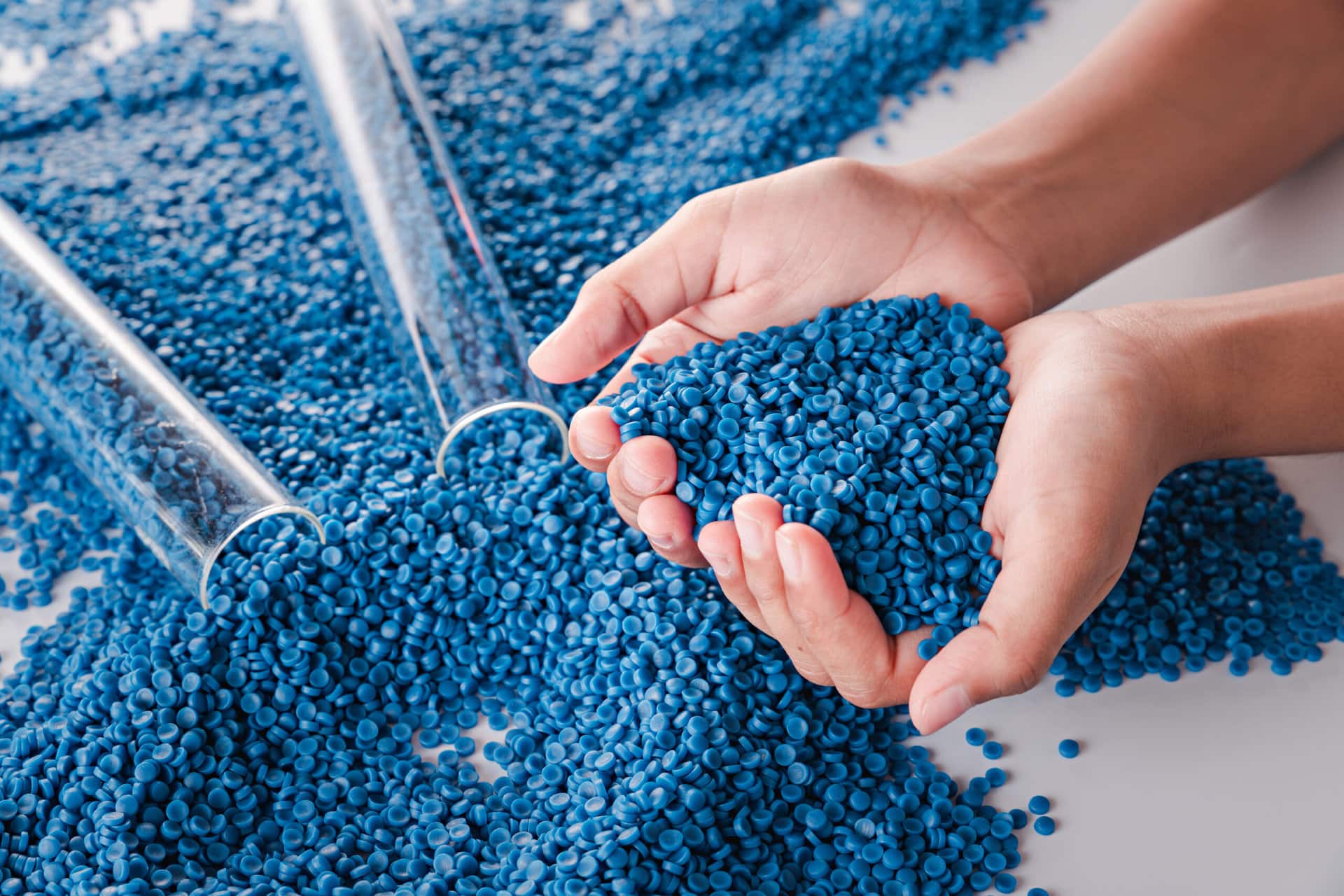
To produce PVC, VCM is mixed with water in the presence of polyvinyl alcohol, lauryl peroxide, or isopropyl percarbonate, where a catalytic reaction takes place. After a few hours, this produces PVC granules, which can be molded to form many commercial products. An alternate route for VCM production is by reacting acetylene (C₂H₂) with hydrogen chloride (HCl).
In a typical ethylene-based VCM production, the main processes include Direct chlorination, oxychlorination, purification of EDC, thermal cracking of EDC, and purification of VCM. Direct Chlorination involves chlorinating ethylene over a catalyst to produce EDC. Oxychlorination is a plug flow tubular reactor (PFTR) with cupric chloride catalyst packed in tubes while cooling water flows for temperature control.
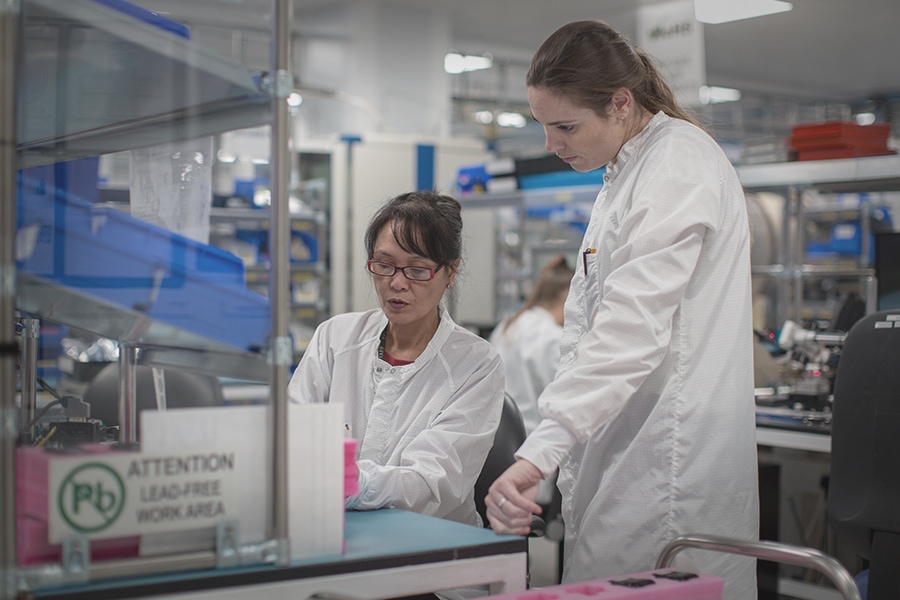
Purification of EDC involves washing in wash tower and scrubbing with caustic soda to remove hydrogen chloride, drying to remove water, and removal of light ends and heavy ends by distillation. The thermal cracking of EDC into VCM and HCl takes place in the pyrolysis furnace in the presence of a catalyst at about 500°C and 50 psig. Lastly, the purification of VCM involves quenching, splitting of HCl, and fractionation to separate VCM from unreacted EDC, HCl, and the remaining by-products.
In a typical acetylene-based VCM production process, brine is first produced by mixing sodium chloride (NaCl) with water. The electrolysis of brine produces caustic soda (NaOH), chlorine (Cl₂), and hydrogen (H₂). Hydrogen chloride is then produced from H₂ and Cl₂ in the synthesis furnace. Acetylene produced from calcium carbide and HCl are mixed and fed into a catalytic reactor where VCM is synthesized over a catalyst. VCM is then purified, dried, and sent to storage or polymerization.
The production of EDC and VCM involves various critical measurement points, including the measurement of ethylene, water in EDC, sodium hydroxide in caustic scrubbers, and hydrogen chloride in the recycling stream. Oxygen measurement at the oxychlorination reactor is also critical to the safety and efficiency of the reaction.
In conclusion, the production of EDC and VCM is a complex process that requires careful control and monitoring. With the right tools and methodologies, manufacturers can safely and efficiently produce these intermediate products, which are crucial in the production of PVC.
Download the Servomex Ethylene Dichloride and Vinyl Chloride Monomer Production Guide

Ethylene Dichloride/Vinyl Chloride Monomer
Reliable gas analysis solutions for complex process measurements in production of these PVC intermediates

Ethylene Dichloride/Vinyl Chloride Monomer
Reliable gas analysis solutions for complex process measurements in production of these PVC intermediates
Remove from basketEthylene Dichloride (EDC) and Vinyl Chloride Monomer (VCM) Production: Ensuring Quality and Safety
Polyvinyl chloride (PVC) is the third-most widely produced polymer in the world, following polyethylene and polypropylene. Its popularity stems from its chemical resistance and mechanical strength. PVC can be manufactured in both rigid and flexible forms, making it suitable for a wide range of products. Consequently, global demand for PVC is high.
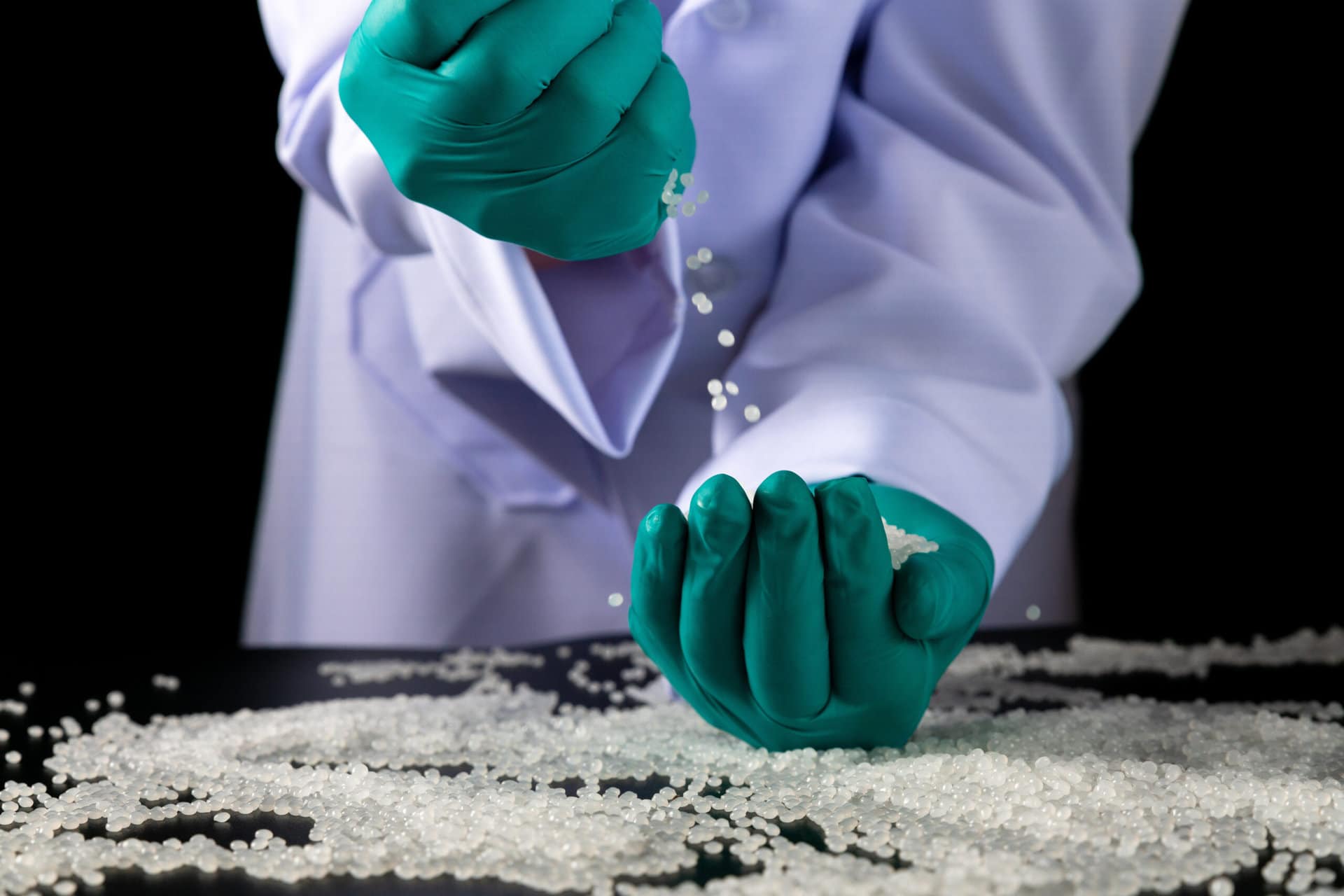
There are two routes to manufacturing PVC: the ethylene-based route and the acetylene-based route. The ethylene-based route has become the predominant application, but the acetylene-based route has advantages. For instance, in China, approximately 60 percent of VCM capacity is acetylene-based due to a shortage of ethylene cracker feedstock.
PVC manufacture is achieved through the production of Ethylene Dichloride (EDC) and Vinyl Chloride Monomer (VCM), which are intermediate products with no direct applications. VCM is produced by reacting acetylene with hydrogen chloride. VCM is mixed with water in the presence of polyvinyl alcohol, lauryl peroxide, or isopropyl percarbonate, where a catalytic reaction takes place. After a few hours, this produces PVC granules, which can be molded to form many commercial products.
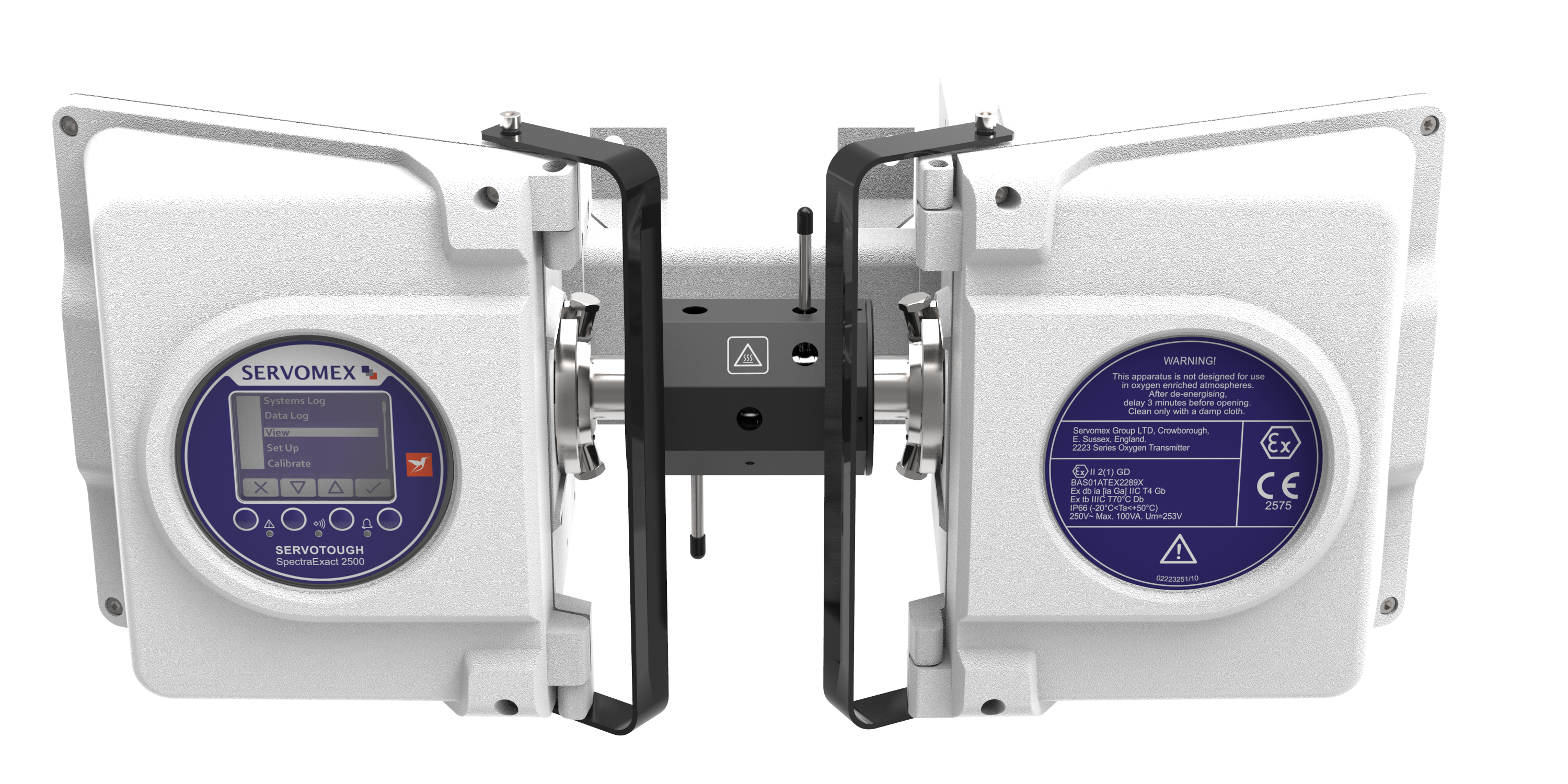
The production of EDC and VCM involves various critical measurement points, including the measurement of ethylene, water in EDC, sodium hydroxide in caustic scrubbers, and hydrogen chloride in the recycling stream. Oxygen measurement at the oxychlorination reactor is also critical to the safety and efficiency of the reaction.
Servomex, a leading provider of reliable, accurate, and stable gas measurement solutions, offers a range of analyzers and systems designed to meet the requirements of both EDC and VCM processes. These solutions include the FluegasExact 2700, an award-winning digital O2 and combustible analyzer; the OxyExact 2200, a high specification process O₂ analyzer; the Oxy 1900, another award-winning digital O₂ analyzer; the Laser 3 Plus, a fast response process O₂ gas analyzer; and the SpectraExact 2500, a rugged photometric gas analyzer for demanding process applications.
Conclusion
In conclusion, the production of EDC and VCM is a complex process that requires careful control and monitoring. With the right tools and methodologies, manufacturers can safely and efficiently produce these intermediate products, which are crucial in the production of PVC. Servomex, with its comprehensive suite of gas analyzers and systems, plays a pivotal role in ensuring the quality and safety of these processes.
Download the Servomex Process Brochure on Ensuring Quality and Safety During EDC and VCM Production

Ethylene Dichloride/Vinyl Chloride Monomer
Reliable gas analysis solutions for complex process measurements in production of these PVC intermediates

Ethylene Dichloride/Vinyl Chloride Monomer
Reliable gas analysis solutions for complex process measurements in production of these PVC intermediates
Remove from basket